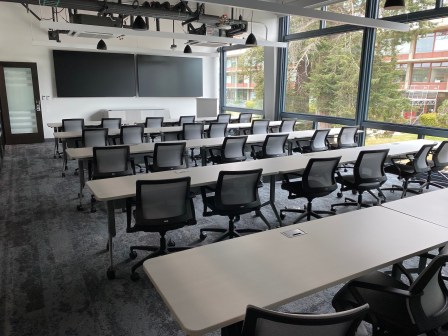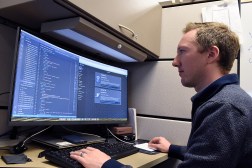How things are going with the Air Force’s experimental NIPRGPT chatbot

Five months after launching an experimental chatbot for airmen, guardians, civilian employees and contractors to interact with, the Department of the Air Force is drawing some early lessons from the deployment of the generative AI technology.
The capability, dubbed NIPRGPT because it’s intended to be used on the Non-classified Internet Protocol Router Network (NIPRNet), was released in June by the Air Force chief information officer and the Air Force Research Laboratory. It’s available to personnel with a Defense Department Common Access Card, and officials are seeking feedback from users that could inform future investments and applications for generative AI tools.
“It is, at its heart, a research experiment, right? We do not think that NIPRGPT is going to be the tool that goes forward. We really actually hope that as these commercial tools come online, they vastly surpass the capabilities of NIPRGPT. But what we’ve learned so far is that people are really excited to use this, and we provide a space in the NIPRGPT for them to use that in a space that they feel safe — I would call it like a safe space, almost — so that when we do get those commercial tools, they know what they’re doing, they don’t have a learning curve to get through,” Amanda Bullock, the artificial intelligence lead at AFRL, told DefenseScoop Thursday at the GovCIO Media & Research AI Summit.
There are three main use cases that service members are employing it for, so far: summarization of documents, drafting of documents and coding assistance.
The coding assistance capability isn’t just helping computer scientists and engineers, but also pilots and other personnel, she noted.
“We’re also finding out that they, as they get more and more excited about these tools, they want better and better features. And you know, that’s where we kind of meet with them and we say, ‘Look, this is not what you need. What you need is one of our commercial partner tools. What you need already exists out there from this small business.’ And so really learning that and talking to people when they get really excited and they’re like, ‘I want my own deployment of NIPRGPT.’ And we’re like, ‘Oh, do we really?’” Bullock said.
The experiments are also highlighting shortfalls in compute.
“We’re also learning the compute, right? The compute is not there. Unfortunately, our friends up on the hill have not planned for this type of technology … at the rapid pace that it’s come. And so we didn’t have the type of compute we needed in our HPCs. We didn’t have the type of compute that we needed in our commercial vendors. And so [we’re] having to pivot very quickly and realize that we need a modular architecture to be able to shift that and offer a hybrid approach to it,” Bullock said.






